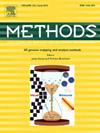Model-agnostic confidence measurement for aggregating multimodal ensemble models in automatic diagnostic systems
IF 4.2
3区 生物学
Q1 BIOCHEMICAL RESEARCH METHODS
引用次数: 0
Abstract
Automatic diagnostic systems (ADSs) have been garnering increased attention because they can alleviate the workload of clinicians by assisting in diagnosis and offering low-cost access to healthcare for people in medically underserved areas. ADS can suggest potential diseases by analyzing a patient's self-report. Previous research on ADS has leveraged diagnostic case data from various patients and medical knowledge to diagnose diseases, with multimodal ensemble methods proving particularly effective. However, the existing multimodal ensemble method combines the probabilities of different models in the aggregating process, which can not properly combine the probabilities that are produced by different criteria. To address these issues, we propose an effective aggregation framework for multimodal ensembles that can properly aggregate model-agnostic confidence scores and predictions from each model. Our framework transforms probability scores from different criteria into unified aggregation rule-based scores and reflects the gap between the probabilities that may be blurred in the aggregation process through the confidence score. In particular, The proposed confidence measurement method employs a post-analysis approach with the developed model or algorithm, making it adaptable in a model-agnostic manner and suitable for multimodal ensemble learning that utilizes heterogeneous prediction results. Our experimental results demonstrate that our framework outperforms existing approaches by more effectively leveraging the strengths of each ensemble member.
在自动诊断系统中聚合多模态集合模型的模型诊断可信度测量。
自动诊断系统(ADS)能够通过辅助诊断减轻临床医生的工作量,并为医疗服务不足地区的人们提供低成本的医疗服务,因此受到越来越多的关注。ADS 可以通过分析病人的自我报告来提示潜在的疾病。以往的 ADS 研究利用来自不同患者的诊断病例数据和医学知识来诊断疾病,其中多模态组合方法尤其有效。然而,现有的多模态集合方法在聚合过程中结合了不同模型的概率,无法正确结合不同标准产生的概率。为了解决这些问题,我们为多模态集合提出了一个有效的集合框架,它可以正确地集合与模型无关的置信度得分和每个模型的预测结果。我们的框架将来自不同标准的概率分数转化为统一的基于聚合规则的分数,并通过置信度分数反映聚合过程中可能模糊的概率之间的差距。特别是,所提出的置信度测量方法采用了一种与所开发的模型或算法相结合的后分析方法,使其具有与模型无关的适应性,适用于利用异构预测结果的多模态集合学习。实验结果表明,我们的框架能更有效地利用每个集合成员的优势,因此优于现有方法。
本文章由计算机程序翻译,如有差异,请以英文原文为准。
求助全文
约1分钟内获得全文
求助全文
来源期刊

Methods
生物-生化研究方法
CiteScore
9.80
自引率
2.10%
发文量
222
审稿时长
11.3 weeks
期刊介绍:
Methods focuses on rapidly developing techniques in the experimental biological and medical sciences.
Each topical issue, organized by a guest editor who is an expert in the area covered, consists solely of invited quality articles by specialist authors, many of them reviews. Issues are devoted to specific technical approaches with emphasis on clear detailed descriptions of protocols that allow them to be reproduced easily. The background information provided enables researchers to understand the principles underlying the methods; other helpful sections include comparisons of alternative methods giving the advantages and disadvantages of particular methods, guidance on avoiding potential pitfalls, and suggestions for troubleshooting.
 求助内容:
求助内容: 应助结果提醒方式:
应助结果提醒方式:


